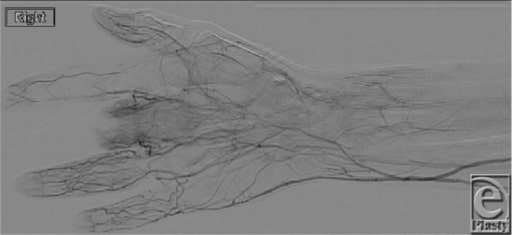Playlist
Show Playlist
Hide Playlist
Buerger's Disease: Definition and Etiology
-
Slides 02 VascularMedicine advanced.pdf
-
Reference List Vascular Medicine.pdf
-
Download Lecture Overview
00:01 Hello. Welcome to the next session of "Vascular Medicine: The Advanced Series." In this session, we're going to be talking about two less common forms of arterial disease: Buerger's disease and Raynaud's disease. Let's first talk about Buerger's disease. Its Latin name is thromboangiitis obliterans, and you can see with the "itis" in there that it's an inflammatory disease having to do with thrombosis and obliterating blood vessels. 00:35 So let's talk about the definition. Thromboangiitis obliterans: It's a form of arterial obstruction, but it affects small and medium-sized arteries (and also the veins, but the arteries in particular) of the hands and the feet. It results from an inflammatory process, which results in scarring of the artery and eventually closing of the artery. You can see, in the angiogram on the left, the arteries don't get out to the fingertips. They die out just before the last digit… the last component of the digit, the last phalanx. And it's not totally clear what... why there is this inflammation, but it's suspected that it's a kind of immune reaction. And it's progressive, and it results actually in death of tissue on the tips of the fingers and toes, as we'll show you in a moment. 01:29 The etiology is heavily related to tobacco use. As I mentioned, it's thought to be an autoimmune disease. But it almost only occurs in people who use a lot of cigarettes, a lot of smoking. And as we talked about, it's caused by inflammation and swelling of these small blood vessels that eventually become markedly narrowed or actually close, and it affects mostly the small arteries of the hands and feet. It can affect the arteries in the leg muscles so that there's intermittent claudication, but much more commonly, it presents with gangrene. 02:09 And you can see in the picture that there's dead tissue at the tips of the fingers and that there's obstruction of the small blood vessels, just as you saw in the angiogram on the last slide.
About the Lecture
The lecture Buerger's Disease: Definition and Etiology by Joseph Alpert, MD is from the course Arterial Diseases.
Included Quiz Questions
Which of the following pairs of etiological factors exclusively result in thromboangitis obliterans?
- Autoimmunity and smoking.
- Exposure to extreme cold and malnutrition.
- Prolonged period of inactivity and carbohydrate rich diet.
- Infection and excessive alcohol consumption.
- Chronic infection and autoimmunity.
Customer reviews
5,0 of 5 stars
| 5 Stars |
|
5 |
| 4 Stars |
|
0 |
| 3 Stars |
|
0 |
| 2 Stars |
|
0 |
| 1 Star |
|
0 |




